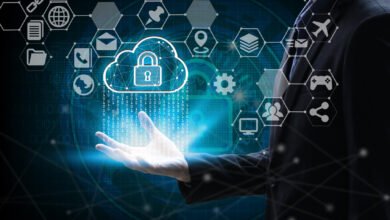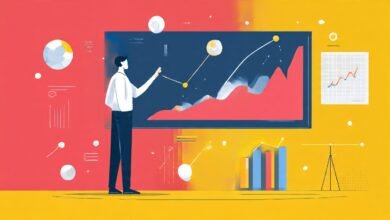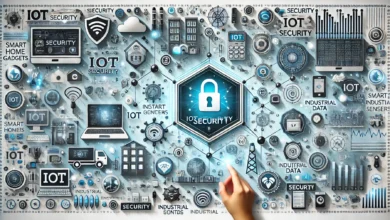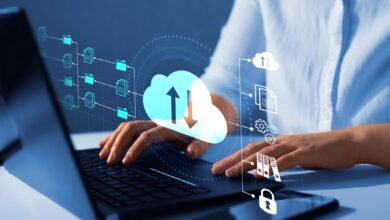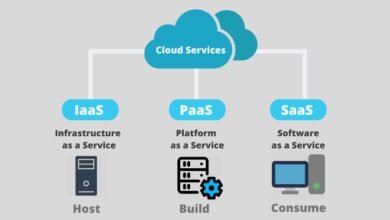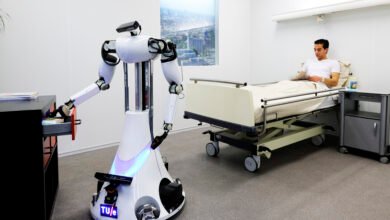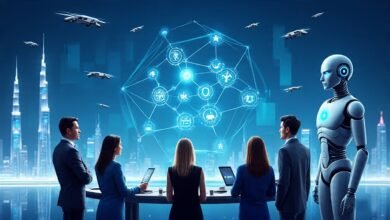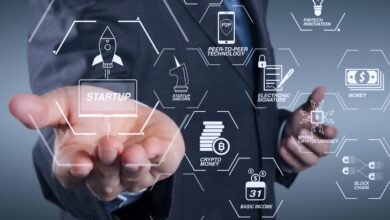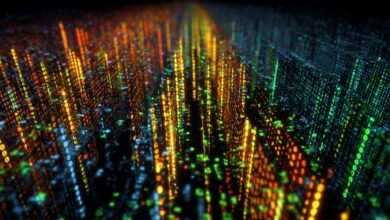
The convergence of Artificial Intelligence (AI) and the Internet of Things (IoT) has reached an unprecedented level of sophistication in 2025, creating what industry experts call AIoT (Artificial Intelligence of Things). This powerful fusion is revolutionizing how businesses operate, cities function, and individuals interact with technology. As connected devices become increasingly intelligent and autonomous, the AI IoT integration is delivering transformative benefits across multiple industries.
The AIoT market has experienced remarkable growth, expanding from $11.08 billion in 2025 to a projected $47.78 billion by 2033, representing a compound annual growth rate (CAGR) of 19.8%. This exponential growth reflects the increasing adoption of smart sensors, edge computing, and machine learning algorithms that enable IoT devices to process data locally and make intelligent decisions in real-time.
What makes AI and IoT such a powerful combination is their complementary nature. While IoT excels at data collection through interconnected devices, AI provides the analytical intelligence to transform raw data into actionable insights. This synergy enables predictive maintenance, autonomous operations, and real-time analytics that were previously impossible with traditional systems.
The impact of AI IoT extends far beyond simple automation. Organizations are leveraging AIoT applications to optimize supply chains, enhance customer experiences, and create entirely new business models. From healthcare IoT solutions that monitor patient vitals continuously to Industrial IoT (IIoT) systems that predict equipment failures before they occur, the applications are virtually limitless.
As we delve deeper into 2025, the integration of 5G connectivity, cloud computing, and advanced AI algorithms is accelerating the adoption of smart cities initiatives, IoT wearables, and intelligent manufacturing processes. This article explores the key trends, benefits, and real-world applications that are defining the AI IoT landscape in 2025 and beyond.
Understanding the AI and IoT Convergence
The Artificial Intelligence of Things (AIoT) represents more than just the sum of its parts. This convergence creates intelligent systems capable of autonomous decision-making, learning from patterns, and adapting to changing conditions without human intervention. The integration combines IoT’s data-gathering capabilities with AI’s analytical power to create smarter, more responsive systems.
AI algorithms process the massive amounts of data generated by IoT sensors and connected devices, identifying patterns and trends that would be impossible for humans to detect manually. Machine learning models continuously improve their accuracy by analyzing historical data and real-time inputs, enabling more precise predictions and automated responses.
Edge computing plays a crucial role in this convergence by processing data closer to its source, reducing latency and enabling faster decision-making. Instead of sending all data to centralized cloud computing platforms, edge AI performs initial analysis on local devices, ensuring critical decisions can be made in milliseconds.
The architecture of AIoT systems typically includes four key layers: the device layer with smart sensors and connected hardware, the connectivity layer enabling data transmission, the data processing layer where AI algorithms analyze information, and the application layer where insights are converted into actionable outcomes.
Key Trends Shaping AI IoT in 2025
Edge AI Adoption
Edge computing has emerged as a game-changing trend in AI IoT deployment. By processing data locally on IoT devices rather than relying solely on cloud computing, organizations achieve significantly reduced latency and improved real-time analytics. This approach is particularly crucial for applications requiring immediate responses, such as autonomous vehicles, industrial automation, and critical healthcare monitoring.
The shift toward edge AI addresses bandwidth limitations and privacy concerns while ensuring system reliability even when internet connectivity is compromised. Smart sensors equipped with built-in processing capabilities can now make intelligent decisions autonomously, reducing dependency on centralized systems.
5G-Enabled IoT Acceleration
The widespread deployment of 5G networks is accelerating AI IoT adoption by providing the high-speed, low-latency connectivity required for advanced applications. 5G connectivity enables real-time data transmission between massive numbers of connected devices, supporting the demanding requirements of smart cities, autonomous vehicles, and Industrial IoT systems.
This enhanced connectivity allows for more sophisticated AI algorithms to be deployed across distributed networks, enabling coordinated intelligence across multiple devices and systems. The combination of 5G and AIoT is particularly transformative for applications requiring ultra-low latency, such as remote surgery and autonomous manufacturing processes.
Predictive Analytics and Maintenance
Predictive maintenance has become one of the most valuable applications of AI IoT integration. By analyzing data from IoT sensors monitoring equipment performance, AI algorithms can predict failures before they occur, significantly reducing downtime and maintenance costs. This proactive approach is revolutionizing industries from manufacturing to healthcare, where equipment reliability is critical.
Machine learning models analyze patterns in vibration, temperature, pressure, and other sensor data to identify early indicators of potential failures. Organizations implementing AI-powered predictive maintenance report up to 25% reduction in maintenance costs and substantial improvements in operational efficiency.
Sustainable and Green IoT
Environmental sustainability has become a driving force in AIoT development. Smart sensors and AI algorithms are being deployed to optimize energy consumption, reduce waste, and minimize environmental impact. Smart cities are implementing AI IoT systems to manage energy distribution, reduce emissions, and optimize resource utilization.
Industrial IoT applications are helping manufacturers reduce their carbon footprint through intelligent process optimization and energy management. AI-powered systems can automatically adjust production parameters to minimize energy consumption while maintaining quality standards.
Benefits of AI IoT Integration
Enhanced Operational Efficiency
The combination of AI and IoT delivers unprecedented operational efficiency improvements across industries. Intelligent systems can optimize processes in real-time, automatically adjusting parameters based on current conditions and predictive models. This automation reduces manual intervention, eliminates human errors, and ensures consistent performance.
AI algorithms analyze data from multiple IoT devices simultaneously, identifying optimization opportunities that would be impossible to detect manually. Organizations report significant improvements in productivity, resource utilization, and overall operational performance after implementing AIoT solutions.
Real-Time Decision Making
AI IoT integration enables organizations to make informed decisions based on real-time data rather than historical reports. Smart sensors continuously monitor conditions and feed data to AI algorithms that can process information and trigger appropriate responses within milliseconds.
This capability is particularly valuable in time-sensitive applications such as emergency response, industrial automation, and healthcare monitoring. Real-time analytics powered by AI ensure that critical situations are identified and addressed immediately, preventing potential problems from escalating.
Predictive Intelligence
One of the most significant benefits of AIoT is its ability to predict future events and trends based on current and historical data. Machine learning models analyze patterns in sensor data to forecast equipment failures, demand fluctuations, and system performance issues before they impact operations.
This predictive intelligence enables proactive management strategies that prevent problems rather than simply reacting to them. Organizations can optimize inventory levels, schedule maintenance activities, and allocate resources based on accurate predictions of future needs.
Cost Reduction and ROI
AI IoT implementations deliver substantial cost savings through improved efficiency, reduced downtime, and optimized resource utilization. Predictive maintenance alone can reduce maintenance costs by up to 30% while extending equipment lifespan significantly.
The automation capabilities of AIoT systems reduce labor costs and eliminate expensive manual processes. Additionally, the improved accuracy of AI-powered decision-making reduces waste and optimizes resource consumption, contributing to significant cost savings across operations.
Real-World Applications Across Industries
Healthcare IoT and Medical Innovations
The healthcare industry has embraced AI IoT technologies to transform patient care and operational efficiency. IoT wearables equipped with smart sensors continuously monitor patient vital signs, enabling early detection of health issues and providing healthcare providers with comprehensive patient data.
AI algorithms analyze data from connected medical devices to identify patterns indicative of potential health problems, enabling predictive healthcare interventions. Remote patient monitoring systems use AI IoT integration to provide continuous care while reducing the need for hospital visits.
Healthcare IoT applications include smart medication management systems that use AI to optimize dosing schedules, IoT-enabled surgical instruments that provide real-time feedback to surgeons, and intelligent hospital management systems that optimize resource allocation and patient flow.
Smart Manufacturing and Industrial IoT
Industrial IoT (IIoT) combined with AI is revolutionizing manufacturing operations through intelligent automation and optimization. Smart sensors monitor production equipment continuously, while AI algorithms analyze performance data to optimize processes and predict maintenance needs.
Digital twins powered by AI IoT create virtual replicas of physical manufacturing systems, enabling simulation and optimization of production processes before implementing changes. This approach reduces risks and ensures optimal performance improvements.
Predictive maintenance systems in manufacturing use machine learning to analyze equipment sensor data and predict failures with remarkable accuracy. This proactive approach has transformed maintenance strategies from reactive to predictive, significantly reducing unplanned downtime.
Smart Cities and Urban Innovation
Smart cities represent one of the most comprehensive applications of AI IoT technology. Urban infrastructure equipped with smart sensors and AI-powered analytics systems optimize traffic flow, energy distribution, and public safety operations.
Intelligent traffic management systems use real-time data from IoT devices to optimize traffic light timing, reduce congestion, and improve transportation efficiency. AI algorithms analyze patterns in traffic flow to predict and prevent potential bottlenecks.
Smart city initiatives also include intelligent energy grids that use AI IoT to balance supply and demand automatically, waste management systems that optimize collection routes, and public safety networks that can detect and respond to emergencies more effectively.
Agriculture and Precision Farming
AI IoT applications in agriculture are enabling precision farming techniques that optimize crop yields while minimizing resource consumption. Smart sensors monitor soil conditions, weather patterns, and crop health, while AI algorithms analyze this data to provide actionable insights for farmers.
Intelligent irrigation systems use IoT sensors to monitor soil moisture levels and automatically adjust watering schedules based on AI-powered predictions of plant needs and weather conditions. This approach reduces water consumption while ensuring optimal growing conditions.
Predictive analytics help farmers anticipate pest infestations, disease outbreaks, and optimal harvest timing. AI algorithms analyze data from multiple sources, including satellite imagery, weather stations, and soil sensors, to provide comprehensive insights for agricultural decision-making.
Challenges and Solutions in AI IoT Implementation
Security and Privacy Concerns
As AI IoT systems handle increasingly sensitive data, security and privacy have become paramount concerns. Connected devices create multiple entry points for potential cyber attacks, while AI algorithms processing personal data raise privacy considerations.
Organizations are implementing comprehensive security frameworks that include encryption, authentication, and blockchain technology to ensure data protection. Edge computing helps address privacy concerns by processing sensitive data locally rather than transmitting it to external cloud computing platforms.
Advanced security measures include AI-powered threat detection systems that can identify and respond to security breaches in real-time. These systems use machine learning to recognize unusual patterns that might indicate security threats.
Interoperability and Integration
The diversity of IoT devices and platforms can create integration challenges when implementing AI IoT solutions. Different manufacturers use various communication protocols and data formats, making seamless integration complex.
Industry standards and open protocols are emerging to address these interoperability challenges. Organizations are also investing in unified platforms that can integrate data from multiple IoT devices and provide consistent AI-powered analytics across different systems.
Scalability and Infrastructure Requirements
Implementing AI IoT systems at scale requires robust infrastructure capable of handling massive amounts of data from thousands or millions of connected devices. Cloud computing platforms and edge computing networks must be designed to scale dynamically based on demand.
Organizations are adopting hybrid approaches that combine cloud and edge computing to optimize performance and cost-effectiveness. This distributed architecture ensures that AI algorithms can process data efficiently regardless of the number of IoT devices in the network.
Future Outlook: What’s Next for AI IoT in 2025 and Beyond
Autonomous Systems and Swarm Intelligence
The future of AI IoT points toward fully autonomous systems capable of self-organization and collaborative decision-making. Swarm intelligence concepts are being applied to networks of connected devices that can coordinate their actions without centralized control.
These autonomous AIoT systems will be capable of adapting to changing conditions, learning from experience, and optimizing their performance continuously. Applications will include autonomous vehicle fleets, self-managing smart cities, and adaptive manufacturing systems.
Advanced AI Integration
The integration of more sophisticated AI algorithms, including deep learning and neural networks, will enable IoT devices to perform increasingly complex tasks. Edge AI capabilities will continue to improve, allowing individual devices to make more intelligent decisions locally.
Natural language processing and computer vision capabilities will be integrated into IoT devices, enabling more intuitive human-machine interactions and expanding the range of applications for AI IoT systems.
Quantum Computing Impact
The emergence of quantum computing will eventually revolutionize AI IoT capabilities by enabling the processing of vastly more complex AI algorithms and larger datasets. This advancement will unlock new possibilities for predictive analytics and optimization that are currently computationally infeasible.
Conclusion
The convergence of AI and IoT in 2025 represents a transformative shift in how technology enhances human life and business operations. The AIoT market’s projected growth to $47.78 billion by 2033 reflects the tremendous value organizations are finding in intelligent connected systems. From healthcare IoT solutions that save lives through early disease detection to Industrial IoT systems that prevent costly equipment failures, AI IoT integration is delivering measurable benefits across all industries. As edge computing, 5G connectivity, and advanced AI algorithms continue to evolve, we can expect even more innovative applications that will further transform our connected world. The future of AI IoT lies in autonomous systems that can adapt, learn, and optimize themselves, creating a more intelligent and efficient world for everyone.


